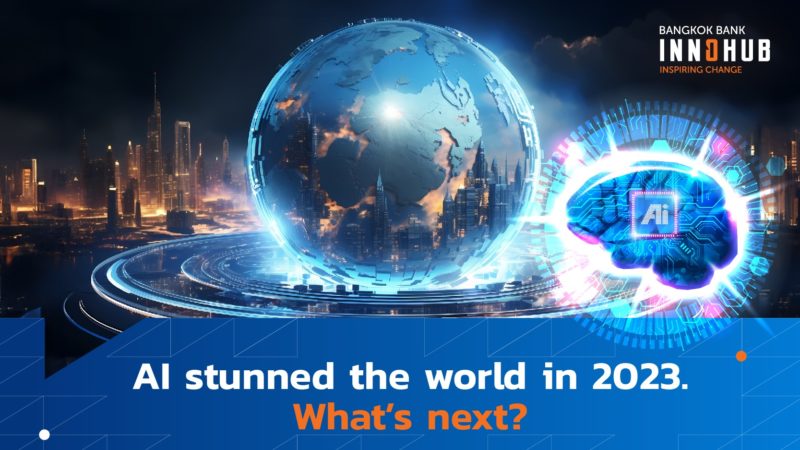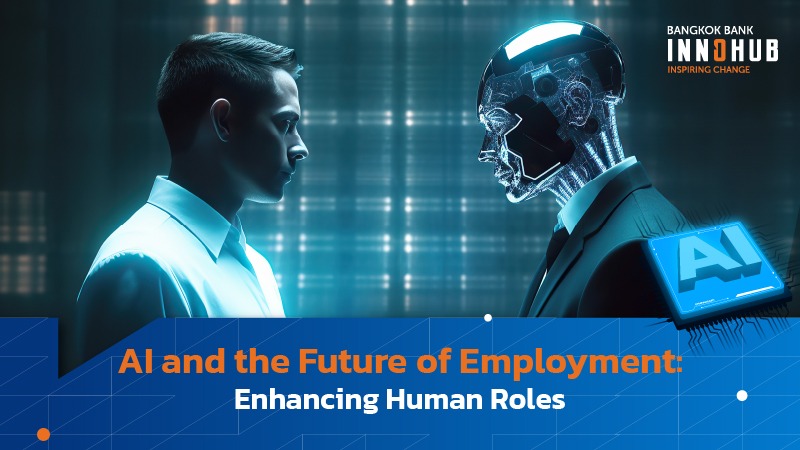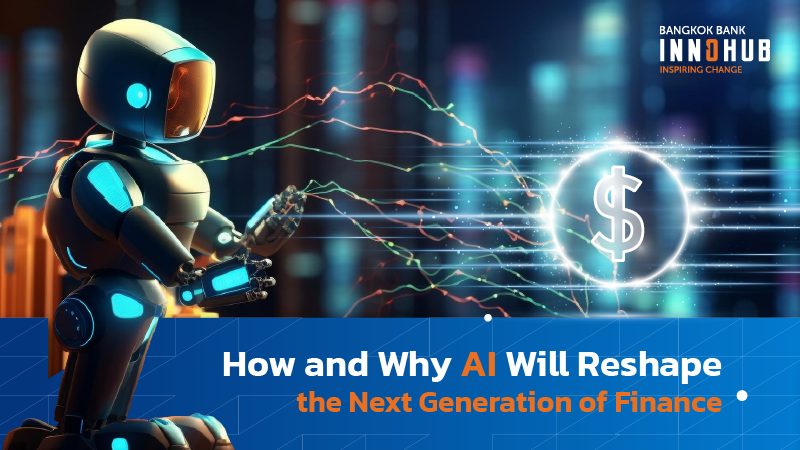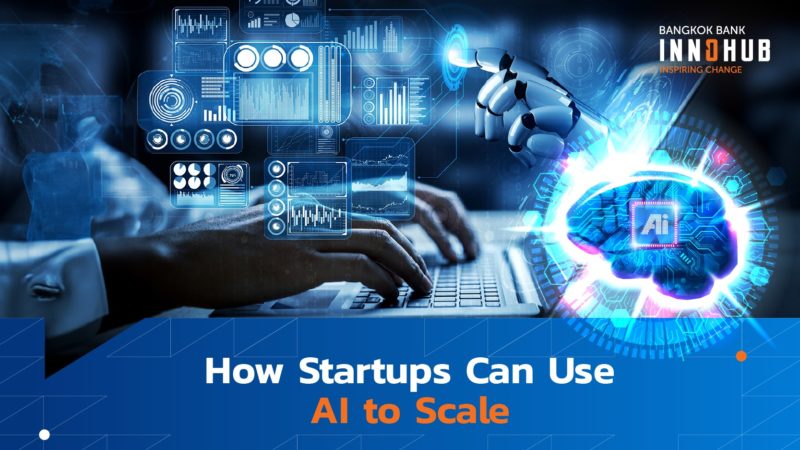In retrospect, it was not so much the realistic output of AI that really turned people’s heads in 2023. It was the speed at which such development occurred — and continues to occur.
We had known for decades that software would continue to improve at tasks like conversation and problem-solving. These were key themes in the stories of Isaac Asimov, whose seminal robot novels date back to 1950; as well as the droids in 1977’s Star Wars, the title character in 1984’s The Terminator, and many other works that caught the public’s imagination.
But somehow most of us had assumed such capabilities would be restricted to some far-off and indefinite future. Indeed, when asked to estimate when the first advanced general intelligence (AGI) system would come online — that is, the first software that performs as well as or better than humans at all intellectual tasks — the consensus was that such a moment was many decades away, if not a century or even longer.
When ChatGPT took the world by storm just over a year ago, followed by a handful of other software products that showed similar skill in language or the visual arts, in addition to aggressive investments in AI development from major software companies, analysts radically shortened their earlier predictions. Many now say we will see AGI in a decade or less.
But is all the hype around AI truly justified? What are the practical uses for generative (creative) AI, and will anything stop the exponential growth of this technology? As we will see, 2024 is shaping up to be an important year for all of these questions, with major implications for society as a whole. Here’s what we expect to see in the coming months:
- The novelty will fade
When ChatGPT, Midjourney, and other generative AI algorithms showed their capabilities in 2023, we had never seen anything like them. But now we have, and the ‘wow’ factor is already starting to disappear. Although these programs remain tremendously capable on a technical level, interactions with them nevertheless lack the type of worldly insight that comes from talking with another human being who brings with them a lifetime of lived experience.
The writers and other artists who went on strike in 2023, partially in fear of being replaced by AI, have little to fear — at least for now. AI can produce (and maybe even act in) formulaic material, but it is nowhere near capable of creating genuinely deep or authentic new work.
Though the Hollywood writers’ strike is over, other media organizations are only beginning to push back against generative AI. The New York Times recently opened a multi-billion dollar lawsuit against the makers of ChatGPT, accusing them of training their software to read and then regurgitate Times content. Since generative AI learns by scraping existing (and generally copyrighted) material, this will be an important lawsuit to watch.
These issues, together with the errors of fact that AI software frequently continues to produce, will dampen interest in the technology among the public as well as the business community.
- Customer Experience (CX) will become a major AI focus
Though AI output cannot reflect the depth of the human experience, it can certainly have a pleasant chat with customers. Instead of calling a company and navigating slowly through an automated phone system, then waiting on hold for a human operator to become available, businesses will soon have algorithms answering your calls right away — and you may not even realize it.
Generative AI can also power online chatbots on websites or social media platforms, to guide and inform potential customers regarding the products and services they are looking for. AI will also be able to help customers after they’ve made their purchases, by answering questions about proper use, product repair, and other issues. Businesses will in turn collect data from these interactions, and use it to improve their future operations.
- AI will be better integrated into economic activity
Companies across industries have already done their initial research into the integration of generative AI in their operations. In 2024, many will implement their conclusions, eventually improving efficiency by a considerable margin.
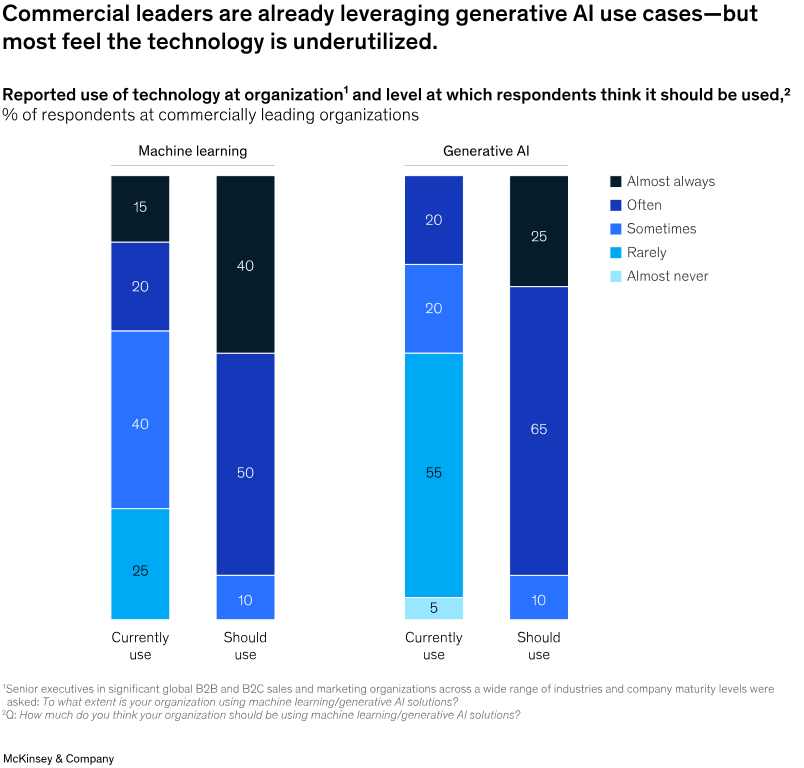
Source: McKinsey & Company
As we see below, the industries where AI is expected to have the greatest impact are often the same industries that employ the highest number of people. Employees will need to learn to work alongside AI, either adding to its capabilities or performing the tasks that AI remains ill-suited for, in order to retain their value on the job market.
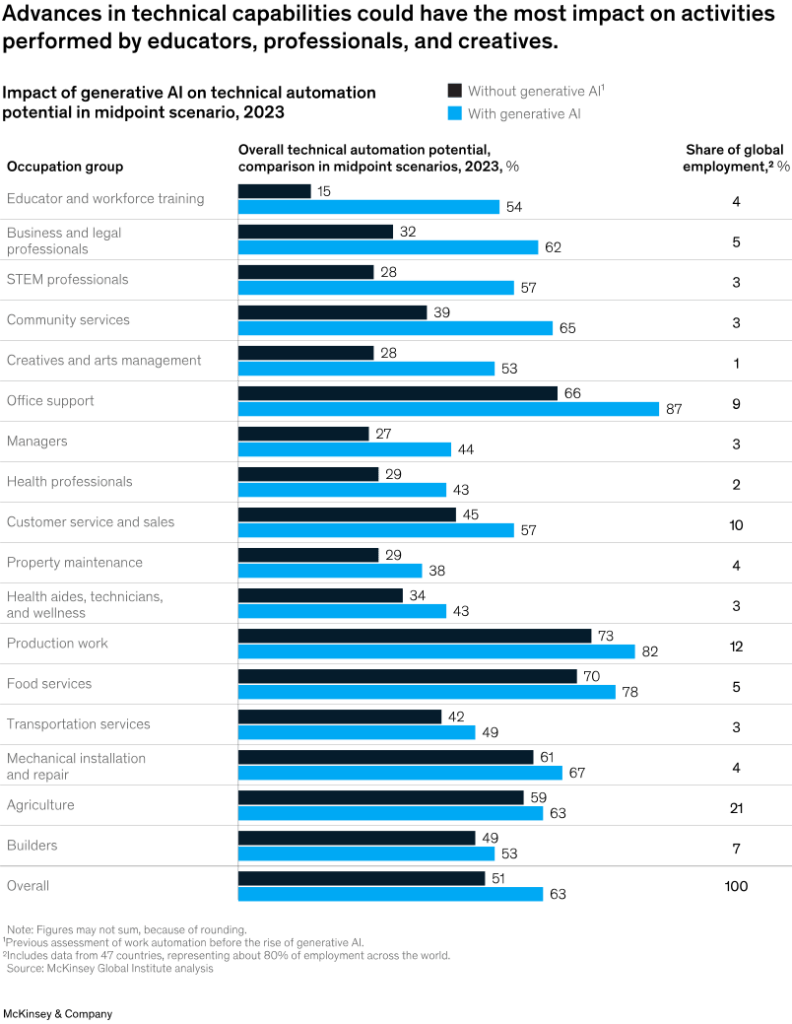
Source: McKinsey & Company
At the same time, organizations will need to transform their own cultural norms if they are to accelerate their growth in 2024 and beyond. Until now, many businesses have been preoccupied with the administrative requirements of running their own operations. With AI able to take over much of this responsibility, employees at all levels should learn to raise their heads and look outward at new ideas and opportunities on the horizon.
The AI-powered economy is expected to grow by many trillions of dollars in the coming years, and much of this growth will be unlocked by the reorientation of corporate thought, as it shifts from administration to imagination. Whether the business community will evolve as quickly as AI software is anyone’s guess — but if we can, then perhaps the hype around an AI future will be justified after all.

